Thingiverse
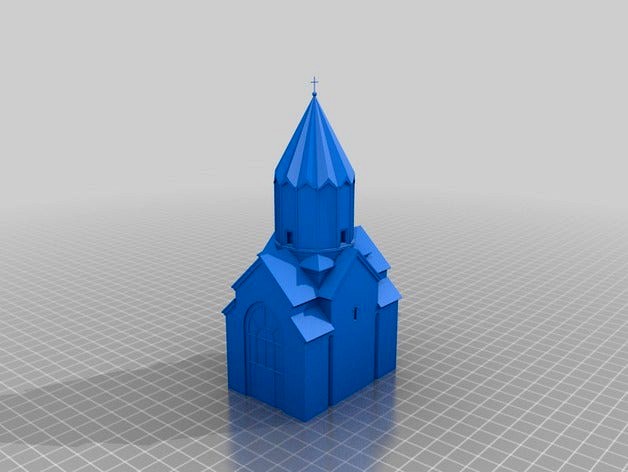
God Kathoghike Church by Taron
by Thingiverse
Last crawled date: 3 years ago
Officially the Holy Mother of God Kathoghike Church is a small medieval Armenian church located in the centre of the ancient Shahar district of Yerevan, associates with the present-day Kentron district of the Armenian capital.
The surviving church dates back to the 13th century. After the 1679 Yerevan earthquake, a large basilica named after the Holy Mother of God was built between 1693 and 1695, in the ancient Shahar district of Yerevan. It was founded on the western side of the Katoghike chapel. It was built of typical Armenian tufa stones and cement and belonged to the three-nave basilica type with no dome. With its prayer hall measuring 14.0 x 19.3 meters, and an outside perimeter of 16.4 x 28.4 meters, it was considered one of the most capacious churches of old Yerevan. The church had entrances on both the southern and western sides.[2]
In 1936, the basilica church of the Holy Mother of God was demolished under the Soviet rule to make way for residential buildings at the Sayat-Nova Avenue. During the demolition process, the 13th-century chapel of Katoghike was discovered encased within the structure of the large basilica. After protests from archaeologists, the chapel was preserved. Many old khachkars (cross-stones) were also found in the walls of the demolished church dating back to the 15th and 17th centuries.
However, the demolished basilica itself was built on the foundations of an old church known as the Holy Mother of God. The hypothesis related to the existence of this old church was completely confirmed during the demolition of the Katoghike Church, when the southern and northern walls to which the two vestries were annexed were opened. The oldest inscriptions found on these walls date back to 1264. There are inscriptions engraved on the western façade dating back to the years 1284, 1229 and to the sixteenth century, whereas on the northern walls the inscriptions refer to the year 1609. Consequently, a chapel has probably been built early in the 17th century at the western side of the Holy Mother of God Church at whose site the building of the Katoghike Church was erected toward the end of the same century. This finding was significant in that it confirms the conclusion that the St. Holy Mother of God Church was the only one of the churches of Yerevan that survived and stood firm after the earthquake.
The current Holy Mother of God Church, which continues to bear the name of Katoghike, is relatively of small size (5.4 x 7.5 m). Due to the very limited space it can offer for the required church rituals, it serves only as a chapel and prayer house.
The surviving church dates back to the 13th century. After the 1679 Yerevan earthquake, a large basilica named after the Holy Mother of God was built between 1693 and 1695, in the ancient Shahar district of Yerevan. It was founded on the western side of the Katoghike chapel. It was built of typical Armenian tufa stones and cement and belonged to the three-nave basilica type with no dome. With its prayer hall measuring 14.0 x 19.3 meters, and an outside perimeter of 16.4 x 28.4 meters, it was considered one of the most capacious churches of old Yerevan. The church had entrances on both the southern and western sides.[2]
In 1936, the basilica church of the Holy Mother of God was demolished under the Soviet rule to make way for residential buildings at the Sayat-Nova Avenue. During the demolition process, the 13th-century chapel of Katoghike was discovered encased within the structure of the large basilica. After protests from archaeologists, the chapel was preserved. Many old khachkars (cross-stones) were also found in the walls of the demolished church dating back to the 15th and 17th centuries.
However, the demolished basilica itself was built on the foundations of an old church known as the Holy Mother of God. The hypothesis related to the existence of this old church was completely confirmed during the demolition of the Katoghike Church, when the southern and northern walls to which the two vestries were annexed were opened. The oldest inscriptions found on these walls date back to 1264. There are inscriptions engraved on the western façade dating back to the years 1284, 1229 and to the sixteenth century, whereas on the northern walls the inscriptions refer to the year 1609. Consequently, a chapel has probably been built early in the 17th century at the western side of the Holy Mother of God Church at whose site the building of the Katoghike Church was erected toward the end of the same century. This finding was significant in that it confirms the conclusion that the St. Holy Mother of God Church was the only one of the churches of Yerevan that survived and stood firm after the earthquake.
The current Holy Mother of God Church, which continues to bear the name of Katoghike, is relatively of small size (5.4 x 7.5 m). Due to the very limited space it can offer for the required church rituals, it serves only as a chapel and prayer house.
Similar models
3dwarehouse
free

Կաթողիկե, Katoghike Church
...templo #vahe #yerevan #армения #ереван #катогике #монастырь #церковь #եկեղեցի #երևան #կաթողիկե #հայաստան #վանք #ایروان #アルメニア #教会
3dwarehouse
free

Church of the Intercession of the Holy Mother of God 2
...er #rusa #ruso #russian #temple #templo #vahe #yerevan #армения #ереван #канакер #церковь #եկեղեցի #երևան #հայաստան #վանք #ایروان
3dwarehouse
free

Surb Hakob (Saint Jacob) Church of Kanaker
...r #temple #templo #vahe #yerevan #армения #ереван #канакер #монастырь #церковь #եկեղեցի #երևան #հայաստան #վանք #ایروان #アルメニア #教会
3dwarehouse
free

Church of the Intercession of the Holy Mother of God 3
...#qanaqer #rusa #ruso #russian #temple #templo #yerevan #армения #ереван #канакер #церковь #եկեղեցի #երևան #հայաստան #վանք #ایروان
3dwarehouse
free

Surb Hakob (Saint Jacob) Church of Kanaker 2
...r #temple #templo #vahe #yerevan #армения #ереван #канакер #монастырь #церковь #եկեղեցի #երևան #հայաստան #վանք #ایروان #アルメニア #教会
3dwarehouse
free

Cross in the yard of Church of the Intercession of the Holy Mother
...er #rusa #ruso #russian #temple #templo #vahe #yerevan #армения #ереван #канакер #церковь #եկեղեցի #երևան #հայաստան #վանք #ایروان
3dwarehouse
free

Armenian Church of the Holy Mother. Saint Astvatsatsin, Nane Maryam.
...աստան #նախիջևան #ջուղա #սուրբ #վանք #استان_آذربایجان_غربی #ايران #جلفای_نخجوان #خوی #صوبہ_لیندا_آزربائ_جان #کعبه_زرتشت #アルメニア #教会
3dwarehouse
free

Church of the Holy Mother of God Leshok
...y mother of god leshok #_богородица #bogorodica #church #crkva #holy #leshok #lešok #mother #sv #tetovo #лешок #св #тетово #црква
3dwarehouse
free

Patriarchal church 'Sv. Vaznesenie Gospodne'
...#cathedral #church #dome #fortress #gallery #hill #kingdom #museum #orthodox #patriarchy #temple #tsarevets #veliko_turnovo #wall
3dwarehouse
free

Etchmiadzin Cathedral
...dzin cathedral is the mother church of the armenian apostolic church and the main building of the mother see of holy etchmiadzin.
Taron
turbosquid
$29
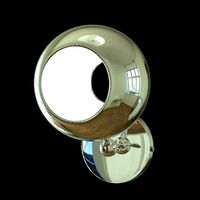
Odeon Light Taron 2869 / 12W ODL16 129
...aron 2869 / 12w odl16 129 for download as max, obj, and fbx on turbosquid: 3d models for games, architecture, videos. (1239376)
thingiverse
free

Taron logo
...my themed toilet project
https://orguerra.com/thematisation-de-mes-wc-facon-klugheim/
https://www.youtube.com/watch?v=2aqt94pdo60
thingiverse
free

Memorial Cicernakaberd by Taron
...nd part 18th to 1st part of 19 century (1915). every year armenian nation respect victims by going to the memorial cicernakaberd.
thingiverse
free

Taron Malicos Lightsaber by ReProps
... i'll have assembly and painting instructions up soon. i would appreciate it you posted a make and check out my other models.
thingiverse
free

BAZA's designed logo for iPhone case by Taron
...signed logo for iphone case by taron
thingiverse
baza's designed logo for iphone case delivered by 3d additive manufacturing
thingiverse
free

St. Astvacacin Church by Taron
...ung designer gevor harutyunyan and architect serob gyulxanjyan, also took part in the processing young composer amas baghinyan :)
thingiverse
free

Flora the Hobbit (Homo floresiensis) by EvX
...happened to be particularly short. for example, the pygmy taron people are supposed to average only 4 feet 3...
cg_trader
$10

Odeon Light Taron 2869 12W ODL16 129
... 129
cg trader
3d model odeon light taron 2869 12w odl16 129 , formats include max, obj, fbx, mat, ready for 3d animation and ot
cg_trader
$4

Star Wars Taron Malicos Horn Printable Model | 3D
... 3d
cg trader
a basic 3d-printable model of the horns worn by taron malicos from star wars jedi fallen order made by commission
God
turbosquid
$50

God
...god
turbosquid
royalty free 3d model god for download as max on turbosquid: 3d models for games, architecture, videos. (1152526)
3d_export
$7
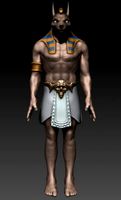
anubis god
...anubis god
3dexport
3d model anubis god.
turbosquid
free

God
... available on turbo squid, the world's leading provider of digital 3d models for visualization, films, television, and games.
3d_export
$65
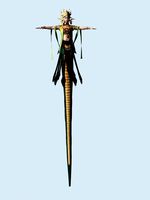
god
...god
3dexport
simple rendering of the scene file
3d_ocean
$29

Epic God
... hand. in his left hand he holds a cup. the archive contains: universal 3d file format (.obj) image preview. *the texture of f...
turbosquid
$350

Shiva GOD
...urbosquid
royalty free 3d model shiva god for download as ma on turbosquid: 3d models for games, architecture, videos. (1475365)
turbosquid
$79

Elder God
...rbosquid
royalty free 3d model elder god for download as c4d on turbosquid: 3d models for games, architecture, videos. (1616087)
turbosquid
$15

God of Ocean
...squid
royalty free 3d model god of ocean for download as stl on turbosquid: 3d models for games, architecture, videos. (1304152)
turbosquid
$11
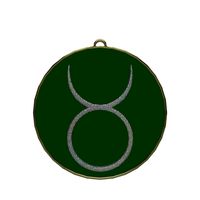
Horned God
...squid
royalty free 3d model horned god for download as blend on turbosquid: 3d models for games, architecture, videos. (1418370)
turbosquid
$3

Hammer of the Gods
...
royalty free 3d model hammer of the gods for download as ma on turbosquid: 3d models for games, architecture, videos. (1327914)
Church
archibase_planet
free
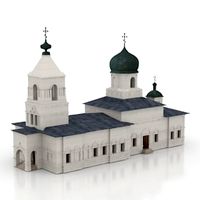
Church
...hibase planet
church orthodox church building construction
church n090615 - 3d model (*.gsm+*.3ds) for exterior 3d visualization.
3d_ocean
$5

Church
...church
3docean
architecture building cathedral church
church, builiding, 3d model, architecture
archibase_planet
free

Church
...church
archibase planet
church building construction
church n300415 - 3d model (*.gsm+*.3ds) for exterior 3d visualization.
3d_ocean
$8

church
...objects, unmaterialed and untextured but with simple enough geometry for it. clock and windows are inset into the church’s wal...
3d_export
$5

church
...church
3dexport
3d_export
$5

Church in the woods
...church in the woods
3dexport
church in the woods.quiet church in the deep forest.come to sunday prayer.
turbosquid
$199

church
...
turbosquid
royalty free 3d model church for download as c4d on turbosquid: 3d models for games, architecture, videos. (1659429)
turbosquid
$199

church
...
turbosquid
royalty free 3d model church for download as c4d on turbosquid: 3d models for games, architecture, videos. (1659303)
turbosquid
$99

Church
...
turbosquid
royalty free 3d model church for download as obj on turbosquid: 3d models for games, architecture, videos. (1232165)
turbosquid
$80

church
...
turbosquid
royalty free 3d model church for download as max on turbosquid: 3d models for games, architecture, videos. (1254635)
